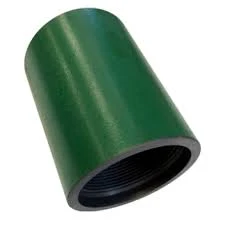- Afrikaans
- Albanian
- Amharic
- Arabic
- Armenian
- Azerbaijani
- Basque
- Belarusian
- Bengali
- Bosnian
- Bulgarian
- Catalan
- Cebuano
- Corsican
- Croatian
- Czech
- Danish
- Dutch
- English
- Esperanto
- Estonian
- Finnish
- French
- Frisian
- Galician
- Georgian
- German
- Greek
- Gujarati
- Haitian Creole
- hausa
- hawaiian
- Hebrew
- Hindi
- Miao
- Hungarian
- Icelandic
- igbo
- Indonesian
- irish
- Italian
- Japanese
- Javanese
- Kannada
- kazakh
- Khmer
- Rwandese
- Korean
- Kurdish
- Kyrgyz
- Lao
- Latin
- Latvian
- Lithuanian
- Luxembourgish
- Macedonian
- Malgashi
- Malay
- Malayalam
- Maltese
- Maori
- Marathi
- Mongolian
- Myanmar
- Nepali
- Norwegian
- Norwegian
- Occitan
- Pashto
- Persian
- Polish
- Portuguese
- Punjabi
- Romanian
- Russian
- Samoan
- Scottish Gaelic
- Serbian
- Sesotho
- Shona
- Sindhi
- Sinhala
- Slovak
- Slovenian
- Somali
- Spanish
- Sundanese
- Swahili
- Swedish
- Tagalog
- Tajik
- Tamil
- Tatar
- Telugu
- Thai
- Turkish
- Turkmen
- Ukrainian
- Urdu
- Uighur
- Uzbek
- Vietnamese
- Welsh
- Bantu
- Yiddish
- Yoruba
- Zulu
casing pup joint
Understanding Casing Pup Joints A Key Component in Oil and Gas Operations
In the oil and gas industry, achieving operational efficiency and safety is paramount. One of the critical components that contribute to these objectives is the casing pup joint. Although often overlooked, pup joints play an essential role in the assembly of casing strings, ensuring the structural integrity and functionality of well operations.
What is a Casing Pup Joint?
A casing pup joint is a short length of tubular steel that is typically used in the assembly of casing strings. Casing, which is large-diameter steel pipe, is critical for supporting the walls of oil and gas wells, preventing collapses and isolating different pressure zones. The pup joint serves as an extension, allowing for the precise adjustment of the casing string's length. It is essential for reaching desired depths and accommodating various wellbore conditions.
Typically, a pup joint ranges from a few inches to several feet in length. They come in various diameters and wall thicknesses, designed to match the specifications of the existing casing design. Their versatility ensures that drilling operations can be adapted to the specific requirements of a given project, making them indispensable in well construction and maintenance.
Applications of Casing Pup Joints
Casing pup joints are used for several key purposes in drilling and completion operations
1. Length Adjustment One of the primary functions of pup joints is to extend the casing string to achieve the required depth. Drilling teams can customize the length of the casing string based on the geological makeup of the area, ensuring optimal drilling conditions.
2. Pressure Management In many situations, wells must pass through different pressure zones. Pup joints help manage these pressures by allowing adjustments to the casing string, ensuring it can withstand varying conditions while maintaining safety standards.
casing pup joint

3. Connecting Sections Pup joints often act as connectors between different sections of casing, creating a comprehensive and secure casing string that meets the operational specifications of the well.
4. Facilitating Operations When performing various operations, such as cementing or completions, the flexibility provided by pup joints can facilitate smoother workflows. They help eliminate gaps and maintain the integrity of the wellbore.
Material and Design Considerations
The material and design of pup joints are crucial for their performance and reliability. Typically manufactured from high-grade carbon steel or alloy steel, they are subjected to rigorous testing to ensure they can withstand the harsh downhole environments. Factors such as material strength, corrosion resistance, and tensile properties are critical in their design.
Additionally, pup joints are usually equipped with threaded connections at both ends. These threads must conform to specific standards, such as API (American Petroleum Institute) specifications, ensuring they are compatible with a wide range of casing and tubing.
Maintenance and Inspection
Maintaining the integrity of casing pup joints is vital for the success of drilling operations. Regular inspections should be conducted to identify any signs of wear, corrosion, or damage. Operators must also ensure that proper handling and storage practices are followed to preserve the integrity of these components prior to installation.
In conclusion, casing pup joints may seem like a minor component of the oil and gas drilling process, but their role is integral to achieving successful well construction and operation. Their ability to provide flexibility, ensure safety, and enhance drilling efficiency underscores their importance in the industry. As drilling technologies continue to advance, the significance of pup joints will only increase, cementing their status as a vital element in oil and gas operations.
-
Tubing Pup Joints: Essential Components for Oil and Gas OperationsNewsJul.10,2025
-
Pup Joints: Essential Components for Reliable Drilling OperationsNewsJul.10,2025
-
Pipe Couplings: Connecting Your World EfficientlyNewsJul.10,2025
-
Mastering Oilfield Operations with Quality Tubing and CasingNewsJul.10,2025
-
High-Quality Casing Couplings for Every NeedNewsJul.10,2025
-
Boost Your Drilling Efficiency with Premium Crossover Tools & Seating NipplesNewsJul.10,2025







